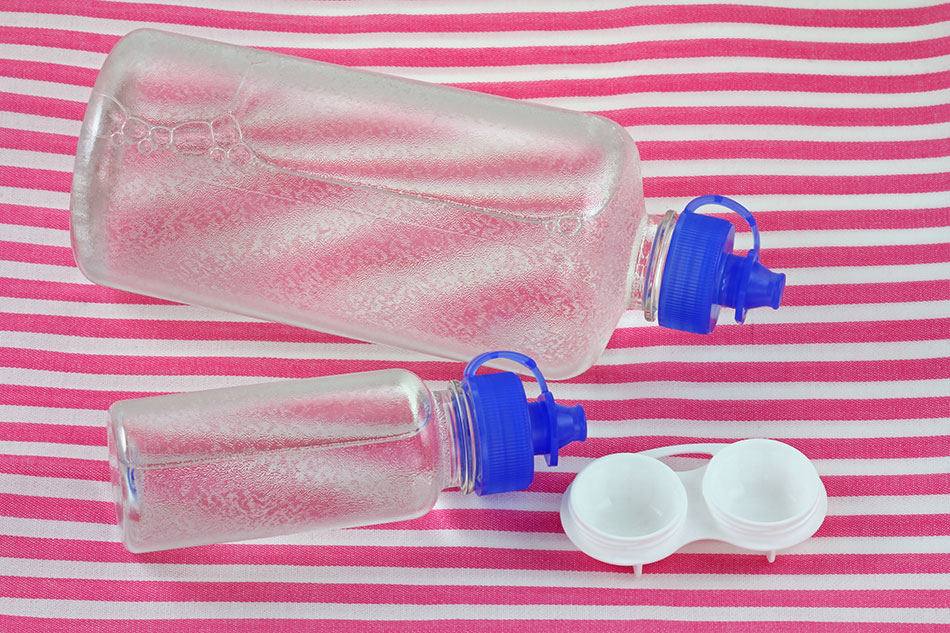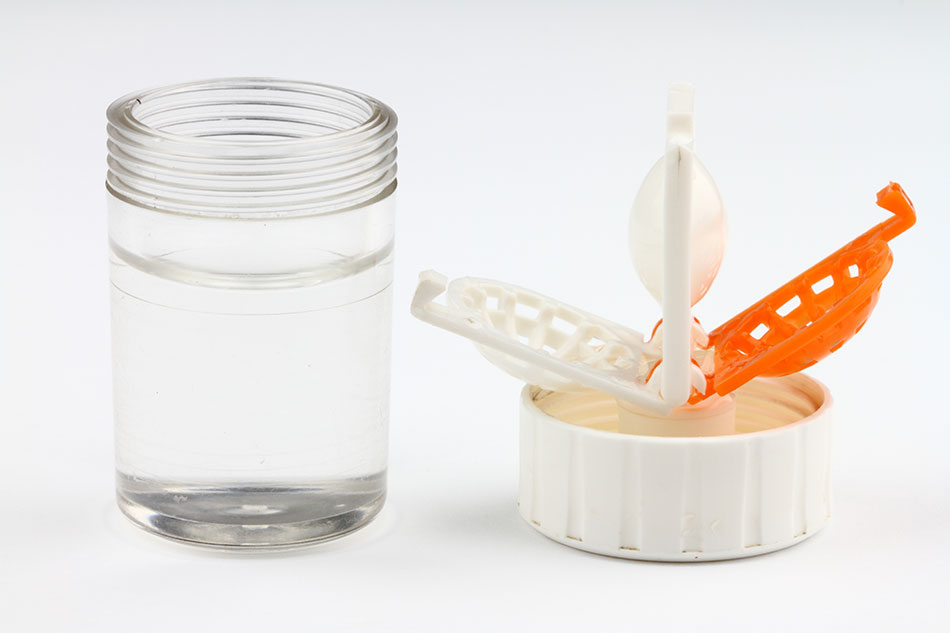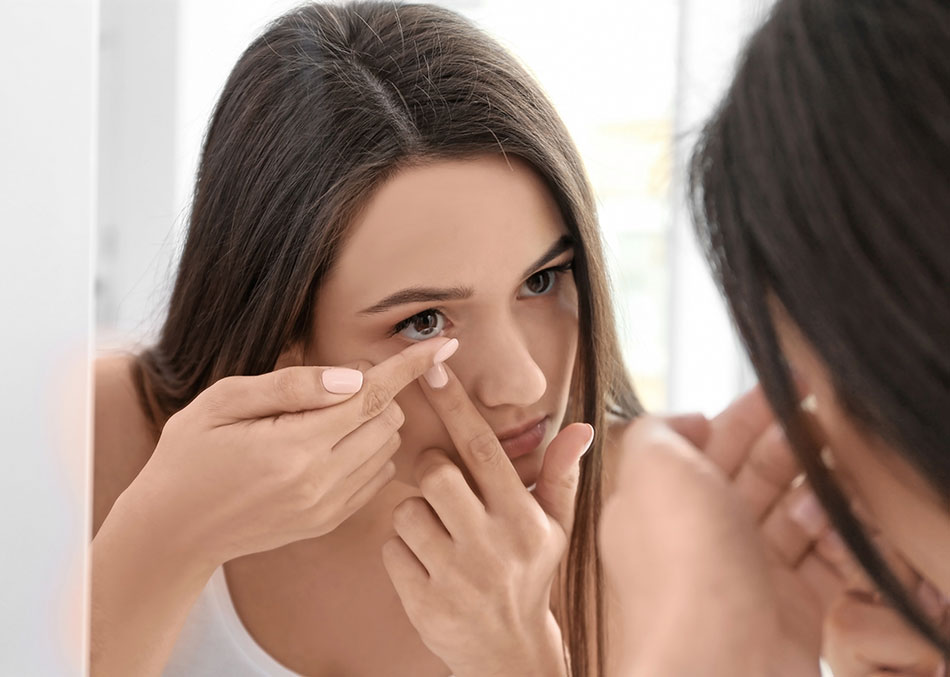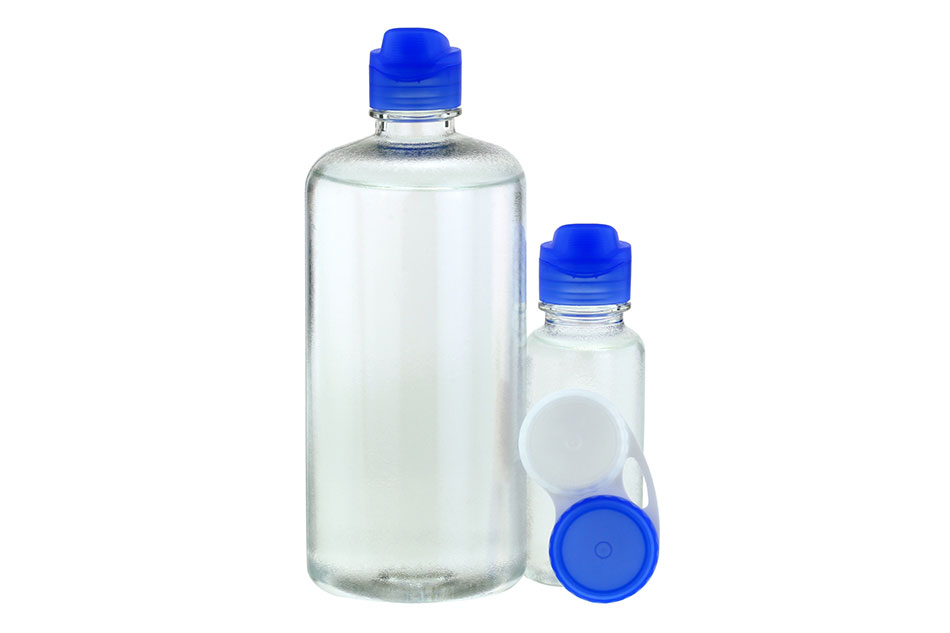Liquid Comfort: How to Choose the Best Contact Lens Solution

When you walk into the store to purchase your contact lens solution, you're met with an explosion of colors and brands.
There are boxes and bottles stacked from one end of the aisle to the other. Each one proclaims to be the best contact lens solution on the market.
So which one should you purchase?
Save your eyes the trouble of sorting through the hodgepodge of brands by following our five tips!
What to Look For in a Contact Lens Solution
There is no one-lens-solution-fits-all. Every individual is different. Some people may find one solution preferable to another. But that doesn't mean you shouldn't equip yourself with the proper knowledge to tackle the long aisles of options.
Here's what you need to consider:
1. Type of Solution
Contact lens solutions with disinfectant fall into two categories: multipurpose and hydrogen peroxide.
When you were first fitted for lenses, your doctor likely discussed possible lens solutions with you. It's always best to purchase the recommended type and brand. Some contact lenses require multipurpose solutions and others need hydrogen peroxide.
Multipurpose
Multipurpose solutions use a variety of chemicals to disinfect your contacts and storage case. They care for soft and rigid gas-permeable lenses. These solutions are affordable and convenient, so most contact wearers favor them.
But they do come with a catch. The preservatives or other ingredients can cause an allergic reaction and irritate the eyes. Furthermore, wearers must make sure the particular type of multipurpose solution is intended for their type of lenses. So soft contacts need a type of multipurpose solution different from that used for rigid gas-permeable lenses.
You should use the multipurpose options if you:
- Prefer convenience
- Prefer less expensive alternatives
- Do not have very sensitive eyes (or a tendency for allergic reactions).
Hydrogen Peroxide
Hydrogen peroxide (H2O2) solutions have been used for cleaning contacts since the 1970s. H2O2 solutions are preservative-free, making them ideal for wearers sensitive to these chemicals. Those who suffer from contact lens discomfort (CLD) will also benefit from an H2O2 cleaning regimen.
Unfortunately, these types of contact lens solutions require stringent attention to instructions. That’s because hydrogen peroxide is very uncomfortable if it comes in contact with the human eye. The result is a stinging, burning sensation that no one wants to experience.
Most domestic-use H2O2 solutions are 3%-6% concentrated, so exposure is not likely to be serious. That said, corneal damage is still possible. That’s why it is important that you fully neutralize the H2O2 solution and your lenses before you wear them.
An H2O2 cleaning procedure may be either a one-step or a two-step process. For the one-step, you use a special contacts case with a built-in neutralizer. The two-step process requires adding a neutralizing tablet to the solution. The neutralization process takes anywhere from 4-6 hours to complete.
Hydrogen peroxide options are best if you:
- Have sensitive eyes (or allergies)
- Follow instructions very well
- Prefer a stronger disinfectant for your lenses.

2. Disinfectant Potential
Next, consider the solution's ability to disinfect. The FDA regulates all lens solutions. That means that all approved lens solutions meet certain standards regarding disinfectant abilities. However, the two main types of solutions still have differences to consider.
Multipurpose solutions have disinfecting capabilities. But off-brands may not adequately remove lipids and protein deposits. Also, the recommendation is that wearers follow the rubbing method even if solutions state the lenses should only go through a rinse.
For best results, look for solutions that contain:
- Chlorhexidine
- Polyaminopropyl biguanide (PAPB)
- Ethylenediaminetetraacetic acid (EDTA)
Two-step hydrogen peroxide solutions contain only one chemical to disinfect. These solutions protect from common pathogens and remove bacterial biofilms that build up over time. H2O2 solutions may also provide a greater resistance to corneal infiltrates. Research also finds that the two-step solutions are more effective than the one-step process.
3. Soak and Cleaning Time
Now that you know about different types of lens solution, let’s consider convenience.
Always check the recommended soak time and directions on the back of every box or bottle. Be honest with yourself about whether you will take any extra steps or not.
Multipurpose solutions generally require the user to:
- Gently rub and rinse lenses for about 20 seconds with the solution
- Place the lenses in their clean cases and submerge them in solution
- Soak for anywhere from 4 to 8 hours
Hydrogen peroxide solutions are a tad more complicated. In addition to rubbing and rinsing with the solution itself, wearers must also place the lens in a special case provided with the solution.
Inside the case, the H2O2 is neutralized so that it does not irritate the eye. Those using hydrogen peroxide should expect to:
- Gently rub and rinse lenses
- Place the lenses in the supplied case
- Soak for at least 6 hours to neutralize the H2O2
Any skipped instruction may result in leftover H2O2 on the lenses, which will irritate your eyes.

4. Comfort
For a contact lens solution to work well, it should match the pH of human tears. Ideally, the pH should be around 7.5.
By mimicking real tears, the solution helps to keep your eyes hydrated all day, so you can achieve maximum comfort.
Several components increase the longevity and level of comfort:
- Humectants
- Lubricants
- Surfactants
Hyaluronan is also especially useful in increasing comfort. Studies have demonstrated that it stays in silicone hydrogel lenses for up to 20 hours. So you should look for contact lens solutions with these ingredients.
5. Price
Some lens wearers are reluctant to purchase brand-name solutions because of the associated price. Hydrogen peroxide solutions in particular can be more expensive than multipurpose ones.
So, potential buyers may be wondering how to get comfort and convenience without emptying their wallets.
The truth is that many individuals use off-brand or generic solution without sacrificing too much comfort. But this is a case of buyer beware! Off-brand products are still regulated by the FDA, but they may alter chemical components without alerting customers of the changes.
It's always wise to check the ingredients before making a purchase.

Ask These Questions to Find the Best Contact Lens Solution
Finally, it's time to put it all together.
Ask yourself:
- Will I rinse my lenses for the allotted time?
- Will I remember to soak my lenses for the appropriate number of hours?
- If there are extra steps, will I take the time to complete them?
- Am I comfortable with the price?
- Will the solution work for my contact lenses?
- Would I prefer multipurpose or hydrogen peroxide to disinfect my lenses?
- Would I like a stronger disinfecting component?
- How much comfort am I looking for?
Most importantly:
- Am I willing to purchase this brand consistently?
Are You Ready to See the Clean Way?
Your search for the best contact lens solution ends here. Next time you walk down the eye care aisle, you'll be prepared! You’ll know how to sort through the many brands to find the solution that's perfect for you.
However, healthy eyes require healthy practices. Even if you have the best lens solution the market offers, it will mean very little if you don't replace your contacts on time.
It’s not hard to find the most popular brands of contact lenses at the best prices. Now you also know how to take care of those contact lenses with the right solution.
